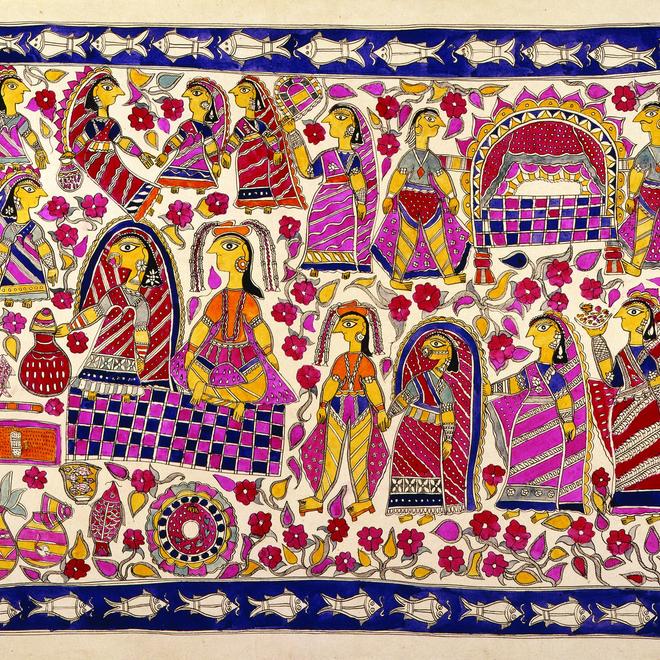
- This event has passed.
An(other) Story: Folk and Tribal Art from India
1 May, 2009 at 12:00 am - 19 Jul, 2009 at 12:00 am

An(other) Story explores a diversity of Folk and Tribal art styles and techniques, including: Madhubani/Mithila, Gond, Warli, Patua scrolls and Folk embroidery, which have been embraced for centuries throughout India.
Even though artists in India have been practicing their folk and tribal art for centuries, the world at large has come to know about these women and men, and only considers them to be artists in the last fifty years. The visibility of Indian Folk and Tribal artists within the wider world started with art created by women who lived in villages near the market town of Madhubani / Mithila, Bihar in northern India. What led these women painters to share their work with the world was a major ecological and economic crisis that resulted from a prolonged drought in 1966-68. In order to create a new source of non-agricultural income, the All-India Handicrafts Board encouraged the women artists to produce their traditional paintings on paper for commercial sale. This design intervention has been a major reason for the survival and revival of folk & tribal arts ever since.
Since these early beginnings, Indian folk and Tribal artists have exhibited their work at major Contemporary art galleries around the world. This exhibition will highlight the first pioneering works by women folk artists from the 1960s/70’s as well as recently commissioned work by award winning artists including: Venkat Raman Singh Shyam; Arvind Ghosalkar; Ramesh Hengani; Saroj Rathod; Gurupada Chitrakar. Bradford Cartwright Hall Museum has kindly loaned the work of Sundaribai for this exhibition.
An(other) Story explores work that uses narrative to reflect a world that is fast changing and perhaps disappearing too, allowing the audience to connect with the journey the work has taken and the future ahead, engaging in a story that has not been touched upon in a contemporary British space before.




